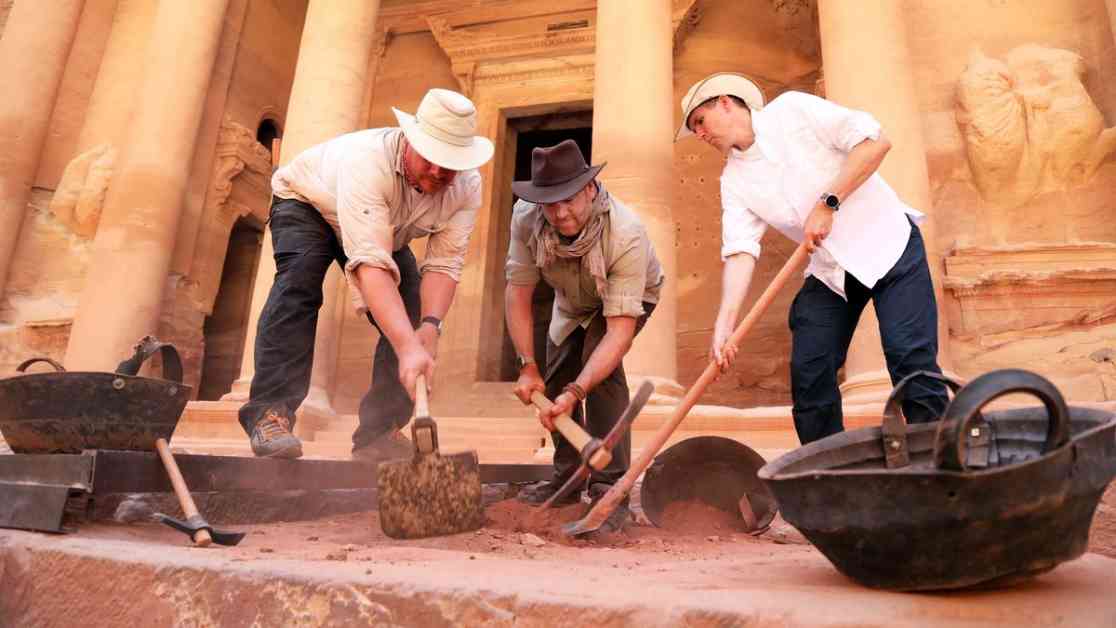Archaeologists recently made an incredible discovery at Petra in Jordan – a 2,000-year-old tomb containing 12 skeletons buried beneath the famous “Treasury.” The Treasury, also known as “Al-Khazneh,” is a well-known site and may have served as a mausoleum for a Nabataean king. This location is familiar to many as it was featured in the movie “Indiana Jones and the Last Crusade.”
During the excavation, archaeologists found pottery buried with the skeletons and one of them was even holding a ceramic vessel resembling a chalice. The remains date back to the first century B.C. or the early second century A.D. This discovery provides valuable insights into the early Nabataeans and their burial practices.
The tomb was uncovered during remote sensing work by a geophysicist from the University of St Andrews, Richard Bates. This finding is significant as complete burials from this period are rare in Petra. The excavation was supported by Jordan’s Department of Antiquities, the American Center of Oriental Research, and Discovery Channel, which produced a documentary about the discovery.
Experts believe that this tomb, along with others excavated in the area, will help to determine the age of the Treasury itself. The findings from this tomb will contribute to our understanding of the Nabataeans and their customs. The discovery has generated excitement among archaeologists and researchers, who hope to learn more about the ancient civilization that once thrived in this region.
While some have pointed out that similar tombs have been excavated in the past, the significance of this discovery lies in the potential to uncover new information about the Nabataeans and their burial practices. The artifacts found in the tomb will provide valuable insights into the cultural and religious beliefs of this ancient society.
This discovery highlights the importance of ongoing archaeological research in Petra and the need to preserve and protect these historic sites for future generations. The findings from this tomb will contribute to our knowledge of the Nabataeans and their way of life, shedding light on a civilization that has long captured the imagination of historians and archaeologists alike.










